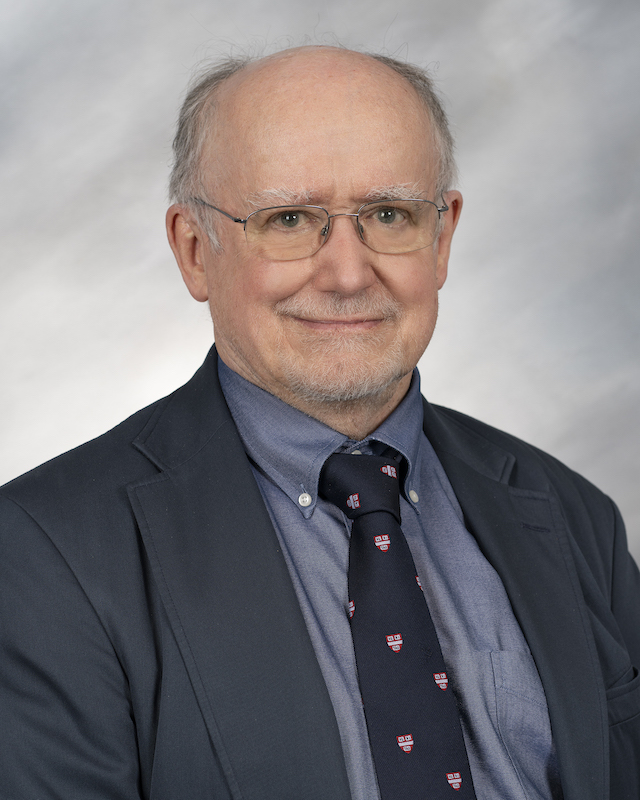Brian Edwards
Position Title
Professor
Education
Ph.D.in Physical Chemistry, Harvard University, Cambridge, MA, 1975
B.Sc. in Chemistry (Honors Program), University of British Columbia, Vancouver, BC, 1969.
Graduate
Accepting new M.S. students in 2024: Yes (BMB)
Accepting new Ph.D. students in 2024: No
Links of Interest
Office Location
4117 Scott Hall
Research
Dr. Edward's laboratory uses X-ray crystallography to elucidate the structure-function relationships of proteins.
Research Focus
Previously, we have published multiple crystallographic projects in blood coagulation and arsenic resistance. Currently, we are working on projects in pyrimidine biosynthesis and oxidative phosphorylation.
Pyrimidine biosynthesis:
The synthesis of pyrimidine nucleic acids is essential for cell division. Consequently, the enzymes in this pathway are potential targets for drugs against cancer and pathogens. We have crystallized several of these enzymes from a thermophilic bacterium and are now working to determine their structure-function relationships. Previously, we have shown that aspartate transcarbamoylase and dihydroorotase, which respectively catalyze the second and third steps in pyrimidine biosynthesis, form a reactor complex, a hollow dodecamer with the 12 active sites facing an internal aqueous chamber, that is essential for the dihydroorotase reaction to proceed. We are now extending these studies to multiple pathogenic bacteria with the goal of developing novel antibiotics.
Cytochrome c regulation of mitochondrial function and apoptosis:
Oxidative phosphorylation and apoptosis are both strongly affected by the phosphorylation state of Cytochrome c at multiple residues (threonine, serine, tyrosine). Recently, we have determined the three dimensional structures of the mouse/rat native protein and its alanine, and phosphomimetic glutamic acid mutants at one of the regulatory sites (Thr28). The properties predicted by the static crystallographic structures were further explored by molecular dynamics calculations. Similar projects on other regulatory sites are ongoing in collaboration with Dr. Maik Hüttemann in the Center for Molecular Medicine and Genetics.
Publications
- *Yap, Y.T, *Li, W., Zhou, Q., *Haj-Diab, S., *Chowdhury, D.D., Vaishnav, A., Harding, P., Williams, Jr., D.C., Edwards, B.F.P., Strauss III, J.F. and Zhang, Z. The Ancient and Evolved Mouse Sperm-Associated Antigen 6 Genes Have Different Biologic Functions In Vivo. Cells, 11: 336 (2022), https://doi.org/10.3390/cells11030336. B.E. contributed protein and model structures to this study. Impact factor: 4.7. Citations: TBD.
- *Bazylianska, V., *Kalpage, H.A., Wan, J., Vaishnav, A., *Mahapatra, G., *Turner, A.A., *Dutta Chowdhury, D., Kim, K., *Morse, P.T., Lee, I., Brunzelle, J.S., Polin, L, *Subedi, P., Heath, E., Podgorski, I., Marcus, K., Edwards, B.F.P., Hüttemann, M. Lysine 53 acetylation of cytochrome c in prostate cancer: Warburg metabolism and evasion of apoptosis. Cells, 2021, 10, 802. https://doi.org/10.3390/cells10040802. B.E. contributed protein molecular dynamics and model crystal structures to this study.
Impact factor: 4.37. Citations: 5. - *Patel, C., Vaishnav, A., Edwards, B.F.P., Evans, D.R., Characterization and assembly of the Pseudomonas aeruginosa aspartate transcarbamoylase-pseudo dihydroorotase complex. PLOS One, March, 1-16 (2020). DOI: 10.1371/journal.pone.0229494. B.E. contributed protein and model crystal structures to this study.
Impact factor: 2.87. Citations: 2 - *Wan, J., *Kalpage, H.A., Vaishnav, A., Liu, J., Lee, I., *Mahapatra, G. *Turner, A.A., *Zurek, M.P., Ji, Q., Moraes, C.T., Recanati, M.A., Grossman, L.I., Salomon,A.R., Edwards, B.F.P., Hüttemann, M... Regulation of Respiration and Apoptosis by Cytochrome c Threonine 58 Phosphorylation. Scientific Reports 9: 15815 (2019). B.E. contributed protein and model crystal structures to this study.
Impact factor: 4.0. Citations: 25. - *Kalpage, H.A., Vaishnav, A., Liu, J., Varughese, A., Wan, J., *Turner, A.A.,Ji, Q., *Zurek, M.P., Kapralov, A.A., Kagan, V.E., Brunzelle, J.S., Recanati, M.A., Grossman, L.I., Sanderson, T.H., Lee, I., Salomon, A.R., Edwards, B.F.P., Hüttemann, M. Serine-47 phosphorylation of cytochrome c in the mammalian brain regulates cytochrome c oxidase and caspase-3 activity. The FASEB J. (2019) DOI: 10.1096/fj.201901120R. B.E. contributed protein and model crystal structures to this study.
Impact factor: 5.39. Citations: 14 - Prange,T., Girard, E., Fourme, R., Dhaussy, A-C., Edwards, B.F.P., Vaishnav, V., *Patel, C., Guy-Evans, H., Herve, G. and Evans, D.R.. Pressure-induced activation of latent dihydroorotase from Aquifex aeolicus as revealed by high pressure protein crystallography. The FEBS J. Vol 286: 1204-1213 (2019) doi:10.1111/febs.14758. B.E. contributed protein and model crystal structures to this study.
Impact factor: 5.39 Citations: 2. - *Spellmon, N., *Sun, X., *Xue, W., *Holcomb, J., *Chakravarthy, X., *Shang, W., Edwards, B.F.P., Sirunupong, N., Li, C., Yang, Z. New open conformation of SMYD3 implicates conformational selection and allostery. AIMS Biophysics 4: 1-18 (2017). TBD. B.E. performed some molecular dynamic studies subsumed in this paper.
Impact factor: 0.60. Citations: 5. - Gargi Mahapatra, Ashwathy Varughese, Qinqin Ji, Icksoo Lee, Jenney Liu, Asmita Vaishnav, Christopher Sinkler, Alexandr A Kapralov, Carlos T Moraes, Thomas H Sanderson, Timothy L Stemmler, Lawrence I Grossman, Valerian E Kagan, Joseph S Brunzelle, Arthur R Salomon, Brian FP Edwards, Maik Hüttemann. Phosphorylation of Cytochrome c Threonine 28 Regulates Electron Transport Chain Activity in Kidney: Implications for AMP Kinase. J. Biol. Chem. 292: 64-79 (2017).
- Spellmon, N., Sirinupong, N., Edwards, B.; Li, C., Yang, Z. Molecular Dynamics Simulation Reveals Correlated Inter-Lobe Motion in Protein Lysine Methyltransferase SMYD2, PLOS ONE, Dec. 30, 2015.
- Evans, H. G., Fernando, R., Vaishnav, A., Kotichukkala, M., Heyl, D., Martin, P. D., Hachem, F., Brunzelle, J. S., Edwards, B. F. P., Evans, D. R. Intersubunit communication in the dihydroorotase–aspartate transcarbamoylase complex of Aquifex aeolicus. Protein Science, 23:100-109 (2014).
- Edwards, B. F. P., Fernando, R., Martin, P. D., Grimley, E., Cordes, M., Vaishnav, A., Brunzelle, J. S., Evans, H. G., Evans, D. R. The mononuclear metal center of type-I dihydroorotase from aquifex aeolicus. BMC Biochemistry, 14: 36 (2013).
- Zhang, P., Martin, P. D., Purcarea, C., Vaishnav, A., Brunzelle, J. S., Fernando, R., Guy-Evans, H. I., Evans, D. R., and Edwards, B. F. P. Dihydroorotase from the hyperthermophile, Aquifiex aeolicus, is activated by stoichiometric association with aspartate transcarbamoylase and forms a one pot reactor for pyrimidine biosynthesis. Biochemistry 48, 776-778, 2009.
